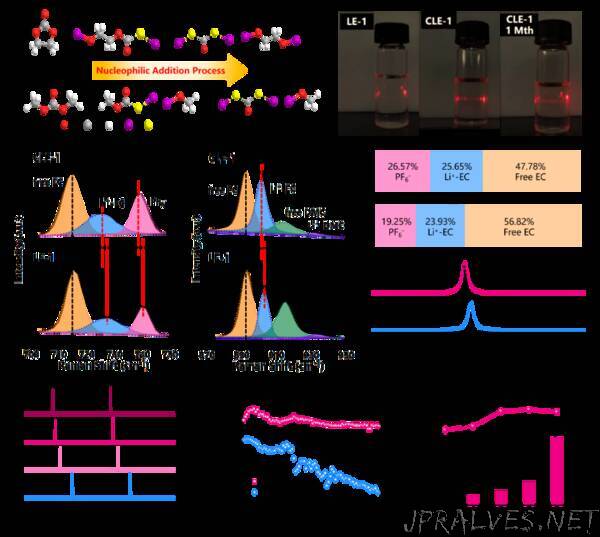
“In order to meet the higher demand for energy storage equipment of electric vehicles and special equipment, it is extremely important to design lithium-ion batteries with high energy density and long cycle life. Ultra-fast charging (XFC) and low-temperature performance are extremely important for the design of high-performance lithium-ion batteries. Designing new electrolytes, improving the Li+transport in the cathode/electrolyte interface reaction layer (CEI), and improving the structural stability of the secondary particles of the oxide polycrystalline cathode material are effective ways to solve the ultra-fast charging and rapid capacity decay of lithium-ion batteries at low temperatures.
Based on this, the research team of Yang Wen, the associate professor of the School of Chemistry and Chemical Engineering of BIT, published a research paper entitled “Colloid Electrolyte with Changed Li+Solvation Structure for High-Power, Low-Temperature Lithium-Ion Batteries” in the internationally renowned journal Advanced Materials. Yang Wen’s research team added lithium thiocarbonate (LTC) as an additive to the commercial electrolyte (LE) to form a colloidal electrolyte (CLE) with the Tyndall phenomenon. In colloidal electrolyte, LTC can have strong interaction with PF6 anion and organic solvent; On the one hand, LTC weakens the electrostatic attraction between the anion and cation of LiPF6 electrolyte and realizes high ionic conductivity of the electrolyte at room temperature and low temperature (σLi+ 15 to 4.5 mS cm-1 at 30 and -20 ºC); On the other hand, the strong interaction between LTC and solvent leads to the desolvation process of lithium ion before it is embedded into the cathode material, so as to improve the lithium-ion transport at the cathode interface. In addition, because LTC has higher HOMO energy level, it is easy to generate ultra-thin (5nm) Li2CO3 dominated dense CEI layer with excellent mechanical properties in the secondary particles of polycrystalline high specific energy oxide NCA cathode material. The Li2CO3 dominant CEI layer exists in the grain boundary of NCA primary particles, which can effectively solve the problem of intergranular cracks caused by LE penetrating into the secondary interior of NCA. Due to the above advantages of CLE electrolyte, the Li/NCA battery assembled by CLE can realize ultra-fast charging and low temperature charging and discharging. It can cycle for 2,000 cycles at a high rate of 10 C, with a capacity retention rate of 80%. The above battery can realize 2 C fast charging at - 10 ℃ low temperature and maintain a long cycle. The low temperature cycle of the battery is 400 cycles, and the capacity retention rate is 90%. The colloidal electrolyte strategy will provide a new idea for the construction of the positive interface between XFC and low-temperature ion batteries.”
